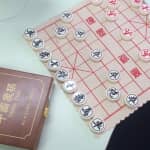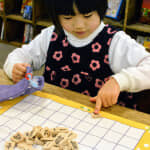Shogi 24 October 2016
Shogi Rules – How to Play Shogi – : Step 1-4 Change of Piece Moves
Explore art of Shogi. A professional Shogi player invites you to the world of Shogi along with tra-ditional Japanese culture.
You now know the moves of Gyoku (King), Kin (Gold) and Gin (Silver). However, the moves of those pieces actually change depending on the situation. Yet, it is not difficult to understand.
The previous step
Board walls, the right and left edge files on a board and the opponent’s pieces affect and change moves of your pieces. Let’s check Gyoku’s (King’s) moves. For example, if Gyoku (King) is located at the bottom, the moves it can make are indicated with the red circles in the picture below.
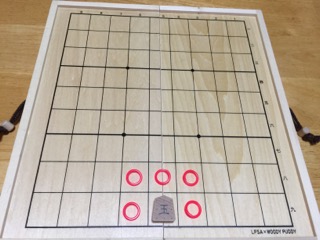
When Gyoku (King) is touching the right wall, the moves it can make are changed as below.
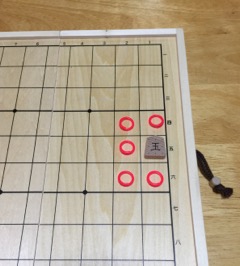
When Gyoku (King) is located at the corner, the number of squares Gyoku (King) can move to changes.
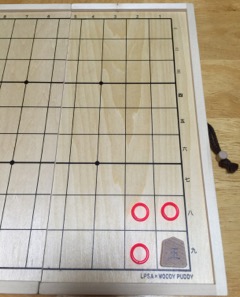
The moves of Kin (Gold) and Gin (Silver) also change as below.

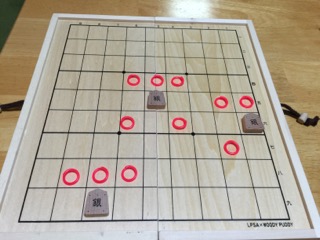
Next, let’s try just a little difficult one. Consider how the oppoent’s Gyoku (King) moves. Gyoku (King) can move one square in any direction, so it can go any square marked with a red circle as seen below. The opponent’s pieces do not bother Gyoku (King), and thus its moves do not change at all.
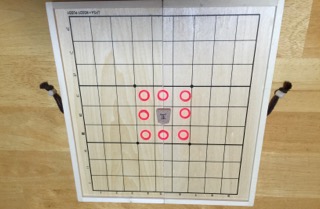
Then, how about the opponent’s KIN and GIN?
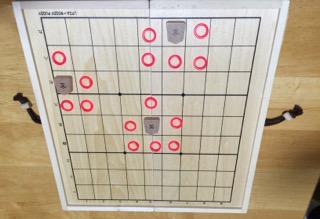
The moves change as seen in the above pictures. So, Kaori and Kyoko, here is a question for you.
Where can these two pieces move?
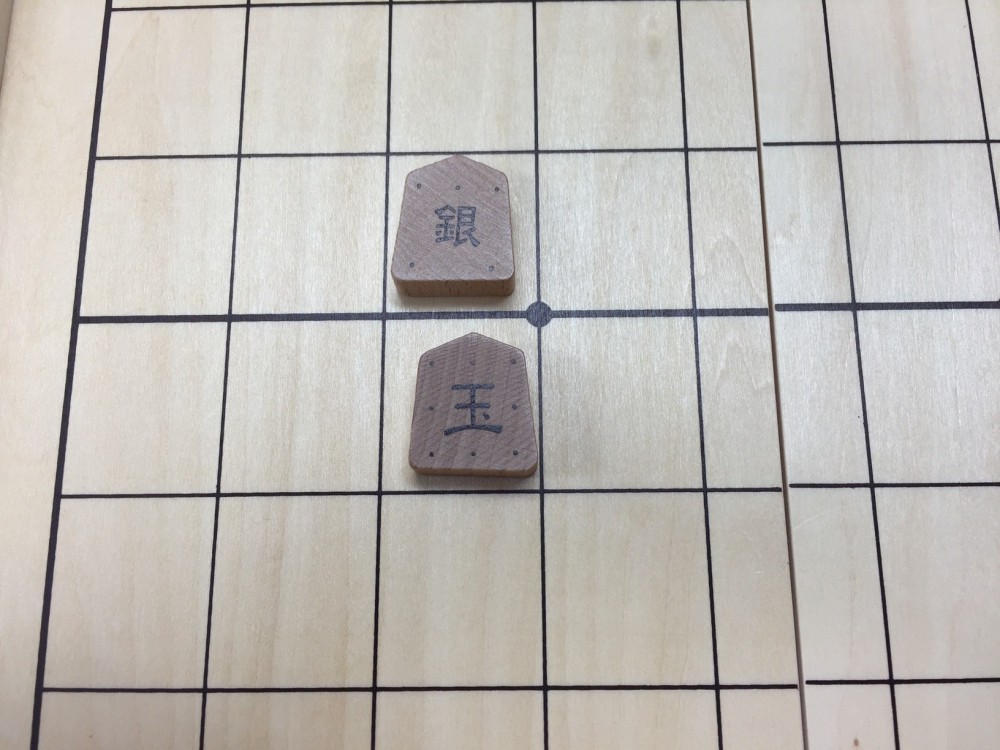
Although Gyoku (King) can move one square in any direction, it cannot go to the square where your own Gin (Silver) is located. Remember that you cannot capture your own pieces. We will learn how to “capture a piece” in the next lesson.
Comments from the girls’ mother
My girls learned piece moves little by little. So, today’s lesson was about changes of piece moves in case a piece was touching the board walls, or another piece was located in the right next square. Today’s lesson was just like a quiz game for the girls, and they enjoyed themselves.
“We cannot push out friends sitting right next to us, can we?” They happily talked.
I hope they can learn how to cooperate in a team through the Shogi lessons. That’s what I felt watching them learning Shogi.

The next step


